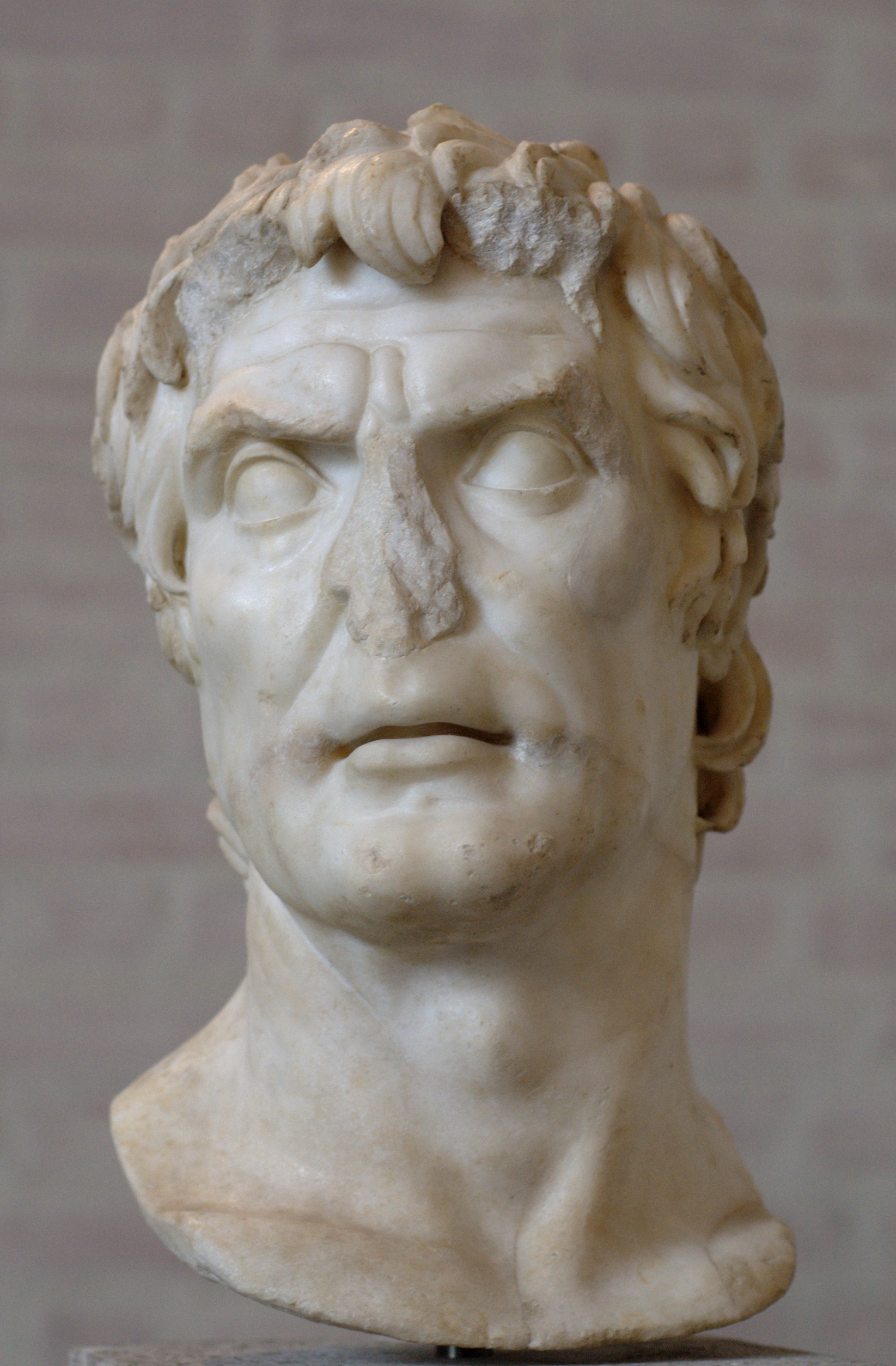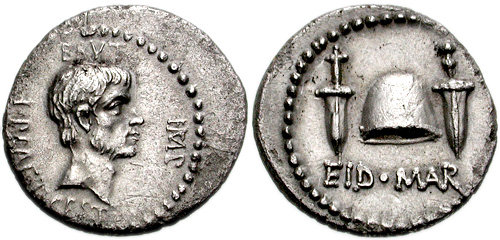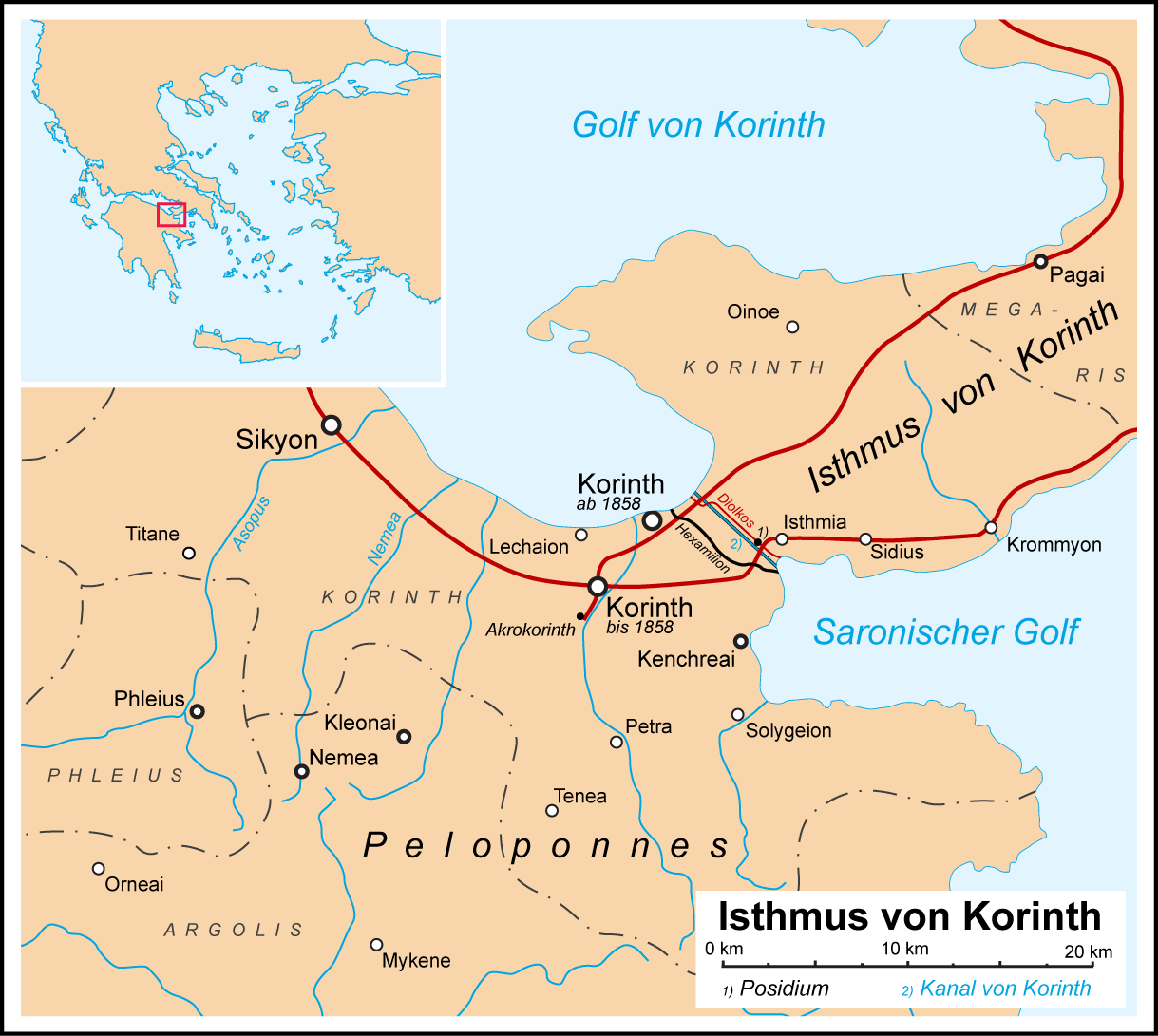|
Perusine War
The Perusine War (also Perusian or Perusinian War, or the War of Perusia) was a civil war of the Roman Republic, which lasted from 41 to 40 BC. It was fought by Lucius Antonius (the younger brother of Mark Antony) and the Umbrians of Perusia in support of Mark Antony against his political enemy Octavian (the future Emperor Augustus). Fulvia felt strongly that her husband should be the sole ruler of Rome instead of sharing power with the Second Triumvirate, especially Octavian. Her prominence in the ensuing conflict was unusual for Roman society, where women were excluded from power and their political contributions rarely documented. Fulvia’s brother-in-law, Lucius Antonius raised eight legions in Italy. The army held Rome for a brief time, but was then forced to retreat to the city of Perusia (modern Perugia, Italy). The Umbrians were sympathetic since some of their towns and surrounding land had been confiscated by Octavian for colonisation by his veterans after the d ... [...More Info...] [...Related Items...] OR: [Wikipedia] [Google] [Baidu] |
Crisis Of The Roman Republic
The crisis of the Roman Republic was an extended period of political instability and social unrest from about to 44 BC that culminated in the demise of the Roman Republic and the advent of the Roman Empire. The causes and attributes of the crisis changed throughout the decades, including brigandage, wars internal and external, overwhelming corruption, land reform, the expansion of Roman citizenship, and even the changing composition of the Roman army. Modern scholars also disagree about the nature of the crisis. Traditionally, the expansion of citizenship (with all its rights, privileges, and duties) was looked upon negatively by the contemporary Sallust, the modern Edward Gibbon, and others of their respective schools, both ancient and modern, because it caused internal dissension, disputes with Rome's Italian allies, slave revolts, and riots.Fields, p. 41, citing Sallust, ''Iugurthinum'' 86.2. However, other scholars have argued that as the Republic was meant to be ''res pub ... [...More Info...] [...Related Items...] OR: [Wikipedia] [Google] [Baidu] |
Second Triumvirate
The Second Triumvirate was an extraordinary commission and magistracy created at the end of the Roman republic for Mark Antony, Lepidus, and Octavian to give them practically absolute power. It was formally constituted by law on 27 November 43 BC with a term of five years; it was renewed in 37 BC for another five years before expiring in 32 BC. Constituted by the '' lex Titia'', the triumvirs were given broad powers to make or repeal legislation, issue judicial punishments without due process or right of appeal, and appoint all other magistrates. The triumvirs also split the Roman world into three sets of provinces. The triumvirate, formed in the aftermath of a conflict between Antony and the senate, emerged as a force to reassert Caesarian control over the western provinces and wage war on the ''liberatores'' led by the men who assassinated Julius Caesar. After proscriptions, purging the senatorial and equestrian orders, and a brutal civil war, the ''liber ... [...More Info...] [...Related Items...] OR: [Wikipedia] [Google] [Baidu] |
Roman Republican Civil Wars
This list of Roman civil wars and revolts includes civil wars and organized civil disorder, revolts, and rebellions in ancient Rome (Roman Kingdom, Roman Republic, and Roman Empire) until the fall of the Western Roman Empire (753 BC – AD 476). For the Eastern Roman Empire or Byzantine Empire after the division of the Empire in West and East, see List of Byzantine revolts and civil wars (AD 330–1453). For external conflicts, see List of Roman external wars and battles. From the establishment of the Roman Republic in 509 BC until the 1st century BC, there were a sparse number of civil wars. But with the Crisis of the Roman Republic (134–44 BC), a period of considerable political instability began. The cause of the late Roman Republican civil wars is contested, as is whether the wars were the cause of, or caused by, the end of the Roman Republic. Regardless, a nearly constant stream of civil wars marked the end of the Roman Republic and heralded the rise of the Roman Empire ... [...More Info...] [...Related Items...] OR: [Wikipedia] [Google] [Baidu] |
1st Century BC In The Roman Republic
First most commonly refers to: * First, the ordinal form of the number 1 First or 1st may also refer to: Acronyms * Faint Images of the Radio Sky at Twenty-Centimeters, an astronomical survey carried out by the Very Large Array * Far Infrared and Sub-millimetre Telescope, of the Herschel Space Observatory * For Inspiration and Recognition of Science and Technology, an international youth organization * Forum of Incident Response and Security Teams, a global forum Arts and entertainment Albums * ''1st'' (album), by Streets, 1983 * ''1ST'' (SixTones album), 2021 * ''First'' (David Gates album), 1973 * ''First'', by Denise Ho, 2001 * ''First'' (O'Bryan album), 2007 * ''First'' (Raymond Lam album), 2011 Extended plays * ''1st'', by The Rasmus, 1995 * ''First'' (Baroness EP), 2004 * ''First'' (Ferlyn G EP), 2015 Songs * "First" (Lindsay Lohan song), 2005 * "First" (Cold War Kids song), 2014 * "First", by Lauren Daigle from the album '' How Can It Be'', 2015 * "First" ... [...More Info...] [...Related Items...] OR: [Wikipedia] [Google] [Baidu] |
40s BC Conflicts
4 (four) is a number, numeral and digit. It is the natural number following 3 and preceding 5. It is a square number, the smallest semiprime and composite number, and is considered unlucky in many East Asian cultures. Evolution of the Hindu-Arabic digit Brahmic numerals represented 1, 2, and 3 with as many lines. 4 was simplified by joining its four lines into a cross that looks like the modern plus sign. The Shunga would add a horizontal line on top of the digit, and the Kshatrapa and Pallava evolved the digit to a point where the speed of writing was a secondary concern. The Arabs' 4 still had the early concept of the cross, but for the sake of efficiency, was made in one stroke by connecting the "western" end to the "northern" end; the "eastern" end was finished off with a curve. The Europeans dropped the finishing curve and gradually made the digit less cursive, ending up with a digit very close to the original Brahmin cross. While the shape of the character f ... [...More Info...] [...Related Items...] OR: [Wikipedia] [Google] [Baidu] |
War Of Actium
The War of Actium (32–30 BC) was the last civil war of the Roman Republic, fought between Mark Antony (assisted by Cleopatra and by extension Ptolemaic Egypt) and Octavian. In 32 BC, Octavian convinced the Roman Senate to declare war on the Egyptian queen Cleopatra. Her lover and ally Mark Antony, who was Octavian's rival, gave his support for her cause. Forty percent of the Roman Senate, together with both consuls, left Rome to join the war on Antony's side. After a decisive victory for Octavian at the Battle of Actium, Cleopatra and Antony withdrew to Alexandria, where Octavian besieged the city until both Antony and Cleopatra were forced to commit suicide. The war involved some of the largest Roman armies ever seen. Both Antony and Octavian's legions were experienced veterans of previous civil wars who had fought together, many also having once served under Julius Caesar. The two did however raise their own legions separately. Following the end of the war, Octavian bro ... [...More Info...] [...Related Items...] OR: [Wikipedia] [Google] [Baidu] |
Octavia The Younger
Octavia the Younger (; 69 BC – 11 BC) was the elder sister of the first Roman emperor, Augustus (known also as Octavian), the half-sister of Octavia the Elder, and the fourth wife of Mark Antony. She was also the great-grandmother of the Emperor Caligula and Empress Agrippina the Younger, maternal grandmother of the Emperor Claudius, and paternal great-grandmother and maternal great-great-grandmother of the Emperor Nero. One of the most prominent women in Roman history, Octavia was respected and admired by contemporaries for her loyalty, nobility and humanity, as well as for maintaining traditional Roman feminine virtues. Life Childhood Octavia was born around 69 BC. Full sister to Augustus, Octavia was the only daughter born of Gaius Octavius' second marriage to Atia, niece of Julius Caesar. Octavia was born in Nola, present-day Italy; her father, a Roman governor and senator, died in 59 BC from natural causes. Her mother later remarried, to the consul Lucius Marcius P ... [...More Info...] [...Related Items...] OR: [Wikipedia] [Google] [Baidu] |
Sicyon
Sicyon (; ; ''gen''.: Σικυῶνος) or Sikyōn was an ancient Greek city state situated in the northern Peloponnesus between Corinth and Achaea on the territory of the present-day regional unit of Corinthia. The ruins lie just west of the modern village of Sikyona (previously Vasiliko). An ancient monarchy at the times of the Trojan War, the city was ruled by a number of tyrants during the Archaic and Classical period and became a democracy in the 3rd century BC. Sicyon was celebrated for its contributions to ancient Greek art, producing many famous painters and sculptors. In Hellenistic times it was also the home of Aratus of Sicyon, the leader of the Achaean League. Ancient history Sicyon was built on a low triangular plateau about 3 kilometres (two miles) from the Corinthian Gulf. Between the city and its port lay a fertile plain with olive groves and orchards. In Mycenean times, according to Eusebius, Sicyon had been ruled by a line of twenty-six mythical king ... [...More Info...] [...Related Items...] OR: [Wikipedia] [Google] [Baidu] |
Hispania
Hispania was the Ancient Rome, Roman name for the Iberian Peninsula. Under the Roman Republic, Hispania was divided into two Roman province, provinces: Hispania Citerior and Hispania Ulterior. During the Principate, Hispania Ulterior was divided into two new provinces, Baetica and Lusitania, while Hispania Citerior was renamed Hispania Tarraconensis. Subsequently, the western part of Tarraconensis was split off, initially as Hispania Nova, which was later renamed "Callaecia" (or Gallaecia, whence modern Galicia (Spain), Galicia). From Diocletian's Tetrarchy (AD 293) onwards, the south of the remainder of Tarraconensis was again split off as Hispania Carthaginensis, Carthaginensis, and all of the mainland Hispanic provinces, along with the Hispania Balearica, Balearic Islands and the North African province of Mauretania Tingitana, were later grouped into a Roman diocese, civil diocese headed by a ''vicarius''. The name Hispania was also used in the period of Visigothic Kingdom, ... [...More Info...] [...Related Items...] OR: [Wikipedia] [Google] [Baidu] |
Starvation
Starvation is a severe deficiency in caloric energy intake, below the level needed to maintain an organism's life. It is the most extreme form of malnutrition. In humans, prolonged starvation can cause permanent organ damage and eventually, death. The term ''inanition'' refers to the symptoms and effects of starvation. Starvation by outside forces is a crime according to international criminal law and may also be used as a means of torture or execution. According to the World Health Organization (WHO), hunger is the single gravest threat to the world's public health. The WHO also states that malnutrition is by far the biggest contributor to child mortality, present in half of all cases. Undernutrition is a contributory factor in the death of 3.1 million children under five every year. The results also demonstrates that as global hunger levels have stabilized, however, despite some progress in specific areas such as stunting and exclusive breastfeeding, an alarming number of ... [...More Info...] [...Related Items...] OR: [Wikipedia] [Google] [Baidu] |
Papers Of The British School At Rome
Paper is a thin, flat material produced by the compression of fibres. Paper(s) or The Paper may also refer to: Publishing and academia * Newspaper, a periodical publication * ''Paper'' (magazine), an American monthly fashion and culture magazine * ''The Paper'' (newspaper), a digital newspaper from Shanghai, China * ''The Paper'' (American newspaper), a 1960s underground newspaper published in East Lansing, Michigan, United States * Papers (software), a reference management package * Scholarly paper, in academic publishing, a work published in a peer-reviewed journal ** Scientific paper * Term paper, a research paper written by a student as a school assignment Society, government, and business * Banknote, or paper money * Commercial paper, a type of unsecured promissory note * Document, a physical representation of a body of information ** Legal instrument or legal document ** Identity documents ** Breed registry or pedigreed animal documentation * ''Paper'' (company), an edu ... [...More Info...] [...Related Items...] OR: [Wikipedia] [Google] [Baidu] |
Philippi
Philippi (; , ''Phílippoi'') was a major Greek city northwest of the nearby island, Thasos. Its original name was Crenides (, ''Krēnĩdes'' "Fountains") after its establishment by Thasian colonists in 360/359 BC. The city was renamed by Philip II of Macedon in 356 BC and abandoned in the 14th century after the Ottoman conquest. The present village of Filippoi is located near the ruins of the ancient city and is part of the region of East Macedonia and Thrace in Kavala, Greece. The archaeological site was classified as a UNESCO World Heritage Site in 2016 because of its exceptional Roman architecture, its urban layout as a smaller reflection of Rome itself, and its importance in early Christianity. History Foundation Thasian colonists established a settlement at Crenides in Thrace in 360/359 BC near the head of the Aegean Sea at the foot of Mount Orbelos, now called Mount Lekani, about north-west of Kavala, on the northern border of the marsh that, in antiquity, cover ... [...More Info...] [...Related Items...] OR: [Wikipedia] [Google] [Baidu] |







